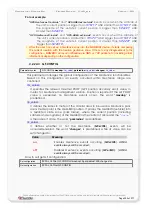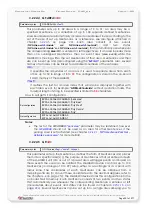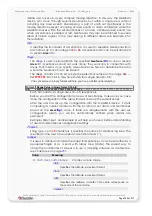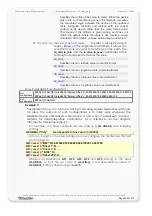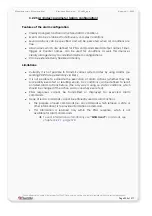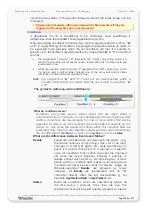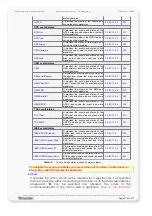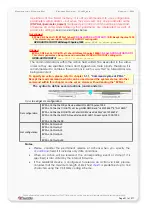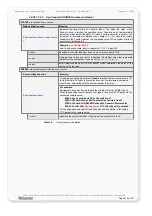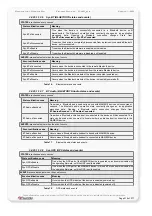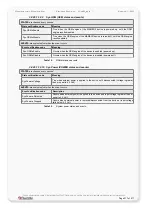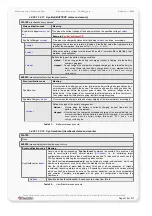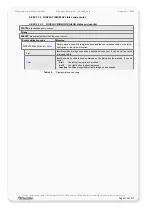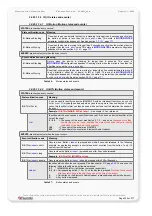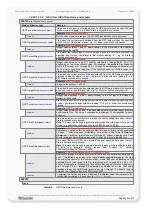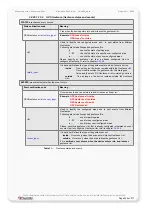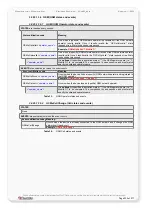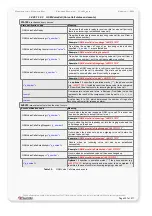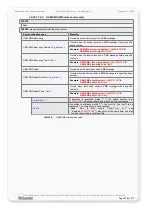
C
ONFIGURATION
C
OMMAND
S
ET
- F
IRMWARE
R
EVISION
2.4.0_
BETA
-
V
ERSION
1.0.0
3.2.25.1.1.2.3
Sys.Timer (TIMER states and events)
STATES
-
are checked every second
State notification code
Meaning
Sys.Timer.s<
index
>=<
status
>
Indicates the current operating mode of the timer index. True when the timer <
index
> is
at the specified status <
index
> until it changes to another status.
Example: Sys.Timer.s1=erased Sys.Timer.s1=initialized
<
index
>
Specifies the timer identifier. It can be set to a value from 0 to 19.
<
status
>
It is used to check the status of a timer. The various states are not exclusive (e.g. a
running timer is always active and initialized).
It can be set to.
Status
Description
erased
Determines whether the specified timer is currently erased.
initialized
Determines whether the specified timer is currently initialized.
active
Determines whether the specified timer is currently started.
inactive
Determines whether the specified timer is currently stopped.
running
Determines whether the specified timer is currently running.
paused
Determines whether the specified timer is currently paused.
armed
Determines whether the specified timer is currently armed.
disarmed
Determines whether the specified timer is currently disarmed.
EVENTS
-
are evaluated just when the event occurs
Event notification code
Meaning
Sys.Timer.e<
index
>
Occurs when the started Timer<
index
> expires.
Hint:
Only the armed timers raise
events.
Example:
Sys.Timer.e1
How to use such an event, refer to the chapters , page (basic examples related to a
used timer) and
, page
(advanced example related to a used timer)
.
<
index
>
Specifies the timer identifier. It can be set to a value from 0 to 19.
Table 13:
Timer states and events.
3.2.25.1.1.2.4
Sys.Trigger (TRIGGER states and events)
STATES-
are checked every second
State notification code
Meaning
Sys.Trigger.s<
index
>=high
True when the Trigger <
index
> is High until it changes to Low. Trigger states can be
set/changed using the corresponding PFAL command.
Example:
Sys.Trigger.s1=high
Sys.Trigger.s<
index
>=low
True when the Trigger <
index
> is Low until it changes to High. Trigger states can be
set/changed using the corresponding PFAL command.
Example:
Sys.Trigger.s1=low
<
index
>
Specifies the trigger identifier. It can be set to a value from
0
to
19
. How to use such
, page
(advanced example related to a used
trigger)
.
EVENTS-
are evaluated just when the event occurs
None
Table 14:
Trigger states and events.
This confidential document is a property of FALCOM and may not be copied or circulated without previous permission.
Page 214 of 271

